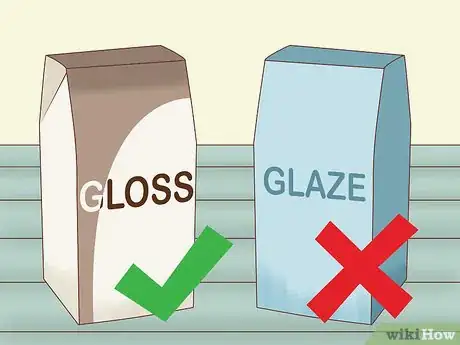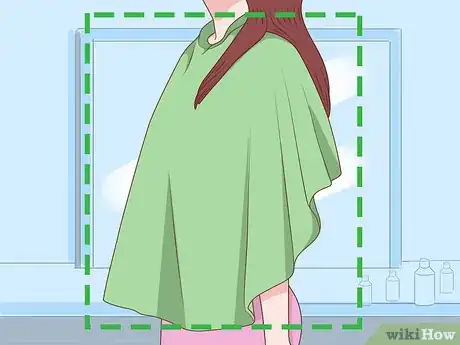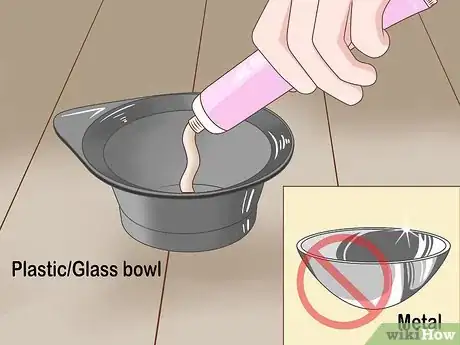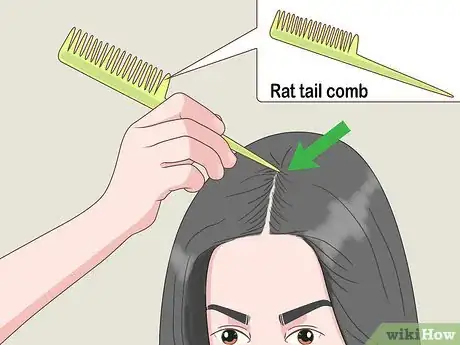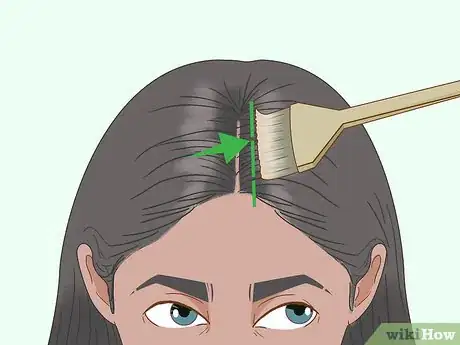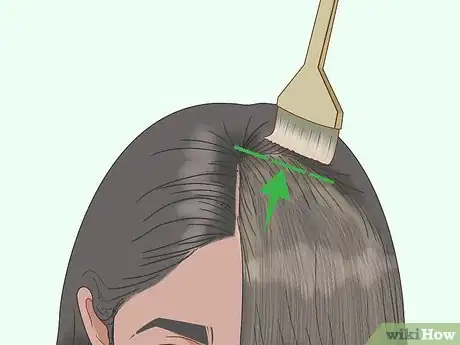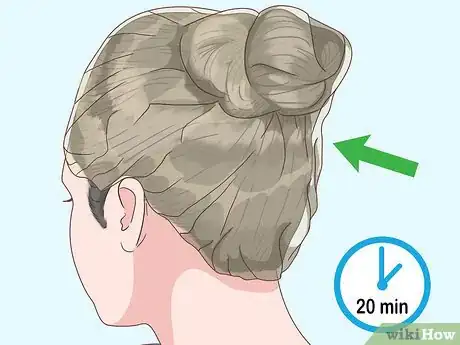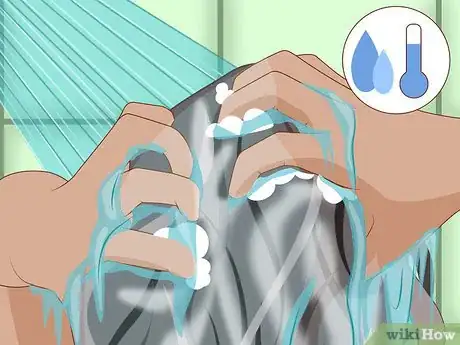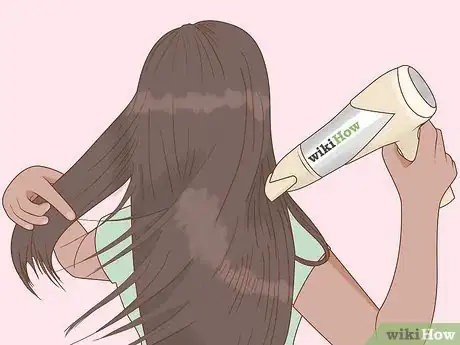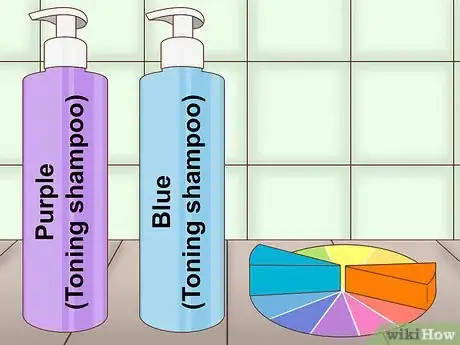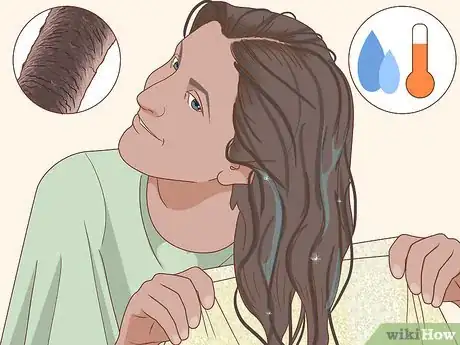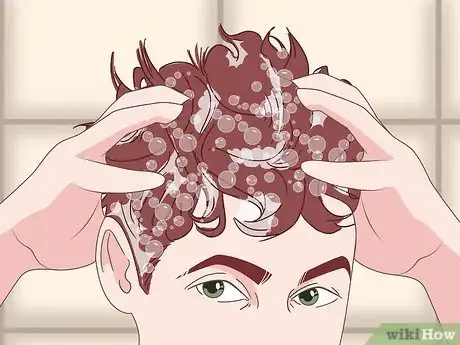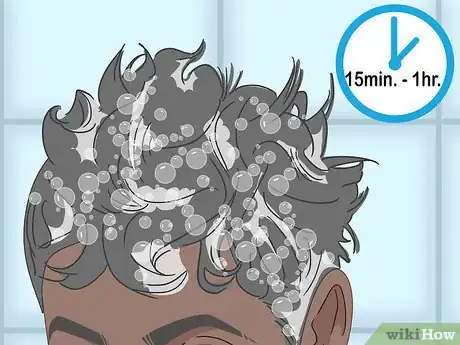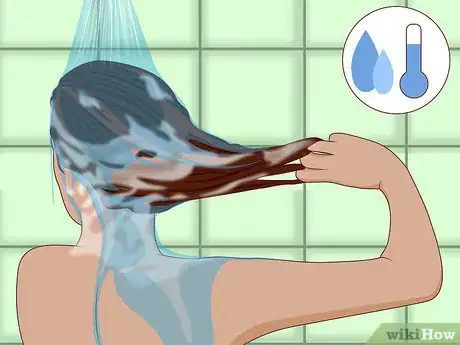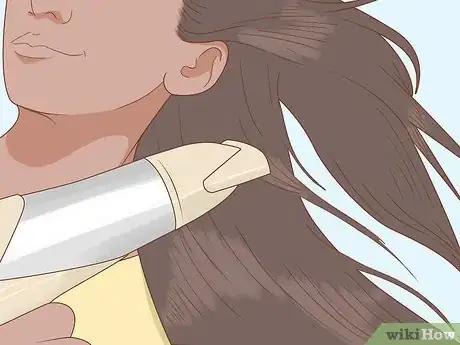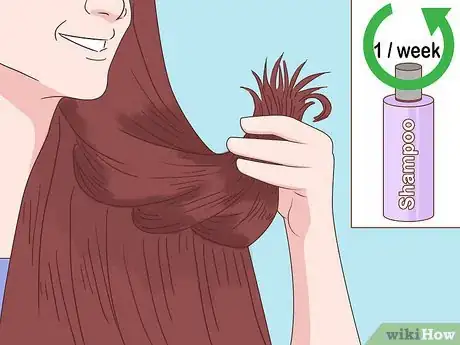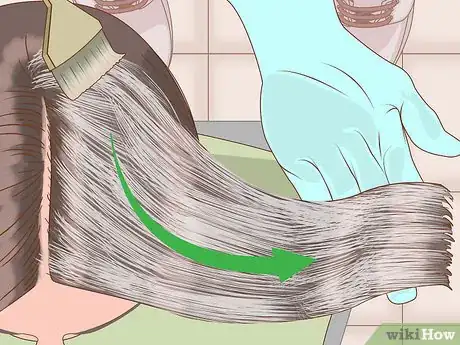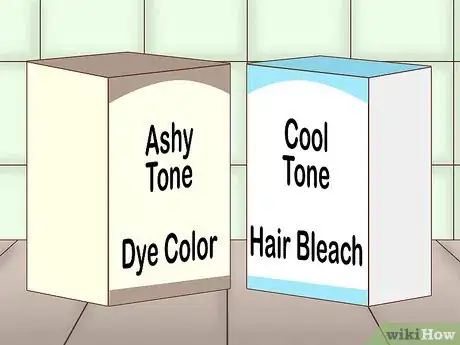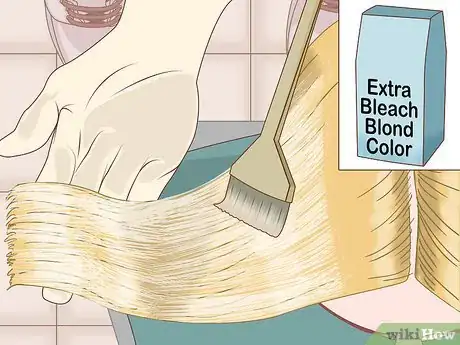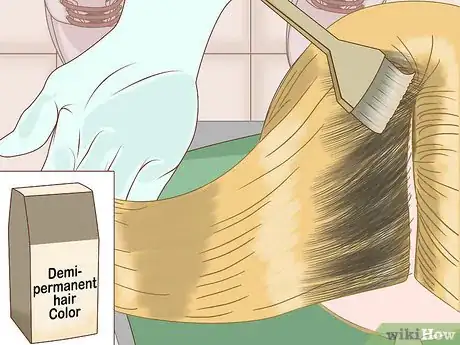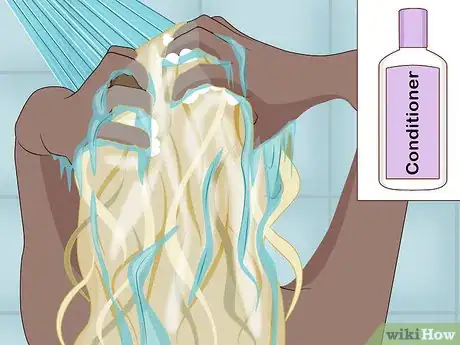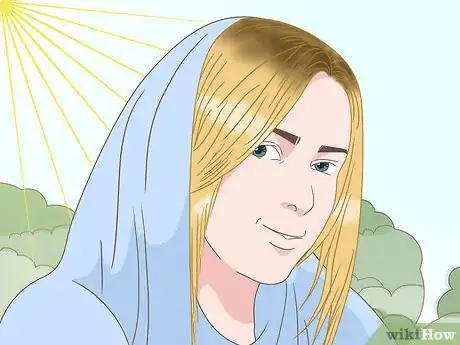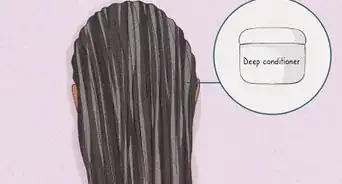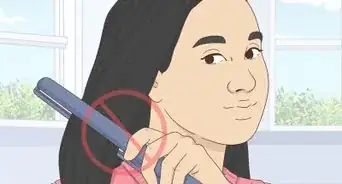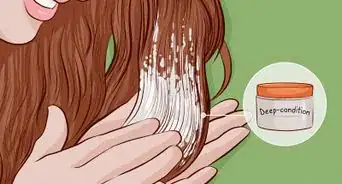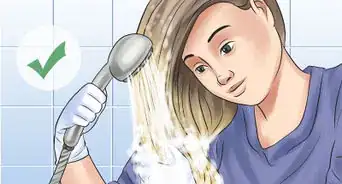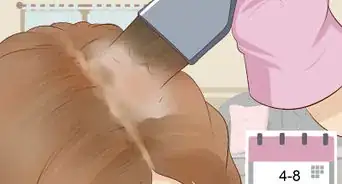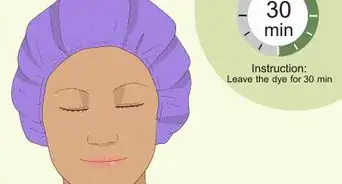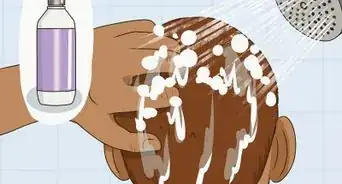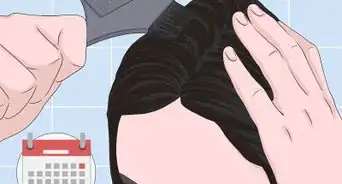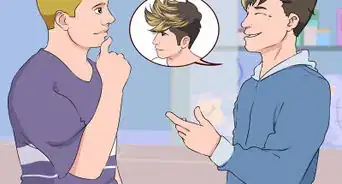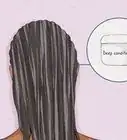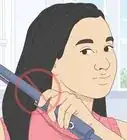This article was co-authored by Karen Leight. Karen Leight is a Professional Hair Stylist and the Owner of Karen Renee Hair, a private salon suite inside the Salon Republic Hollywood in Los Angeles, California. With over 12 years of experience, Karen is a licensed cosmetologist specializing in hair color, balayage technique, and women’s and men’s precision haircuts.
There are 14 references cited in this article, which can be found at the bottom of the page.
wikiHow marks an article as reader-approved once it receives enough positive feedback. In this case, 100% of readers who voted found the article helpful, earning it our reader-approved status.
This article has been viewed 352,436 times.
Contrary to the name, hot roots are anything but "hot." A result of improper bleaching or lightening, they appear warmer than the rest of your hair. This usually occurs because the heat from your scalp causes the dye nearest your head to process faster.[1] In extreme cases, they may even appear orange! The surest way to fix them would be to dye your hair a darker color, but that would undo all of your hard work Luckily, are lots of other easy ways to fix them.[2]
Steps
Coloring the Roots
-
1Get a cool-toned gloss that matches your hair color.[3] You can find it alongside the hair dye kits in salons and beauty supply stores. Even if the rest of your hair is warm-toned, you should get gloss in a cool version of the same color. This will help neutralize and tone down the brassiness.[4]
- Make sure that you get a gloss and not a glaze. They sound similar, but are actually pretty different. A gloss is more permanent and helps adjust tone, whereas glaze doesn't.[5]
-
2Protect your skin, clothing, and work surface. Cover your counter with a sheet of newspaper. Put on an old shirt, a dyeing cape, or drape an old towel around your shoulders. Apply some petroleum jelly around your hairline. Lastly, pull on a pair of plastic gloves.[6]Advertisement
-
3Squeeze the gloss out into a non-metal bowl, if desired. Most glosses come in an applicator bottle, which you can use to apply the product directly to your hair. If you find it easier to apply things with an applicator brush, however, squeeze the gloss into a non-metal bowl.[7]
-
4Section off your hair using the handle of a rat-tail comb. This is necessary for those with long hair, and highly recommended for those with short hair. Part your hair vertically down the middle, from forehead to nape, then part it again horizontally from ear-to-ear. Use hair clips to keep each section separate.[8]
-
5Apply the gloss to your hairline, taking care to avoid the scalp. If you kept the gloss in an applicator bottle, draw a thin line of gloss along your hairline, then blend it into your roots using a tinting brush. If you squeezed the gloss into a non-metal bowl, dip an applicator brush into the gloss, then brush it onto your hairline instead.[9]
-
6Apply the gloss to your hair in small sections, starting from the roots. Select a 1 inch (2.5 cm) section of hair and apply the gloss to the roots. Blend the gloss down to the rest of your hair using a tinting brush. Use the handle of a rat-tail comb to separate another 1 inch (2.5 cm) section, and apply more gloss. Continue applying the gloss to 1 inch (2.5 cm) sections until all your hair is covered.[10]
- You can apply the gloss just to your roots, but it would be safer to apply it to the rest of your hair.
-
7Let the gloss sit for the time recommended on the package. For most brands, this will be about 20 minutes. You can also help speed up the process by sitting under a hair steamer or heated dryer for half the recommended time.[11]
- You may want to cover your hair with a plastic shower cap while the gloss processes, particularly if you plan to sit under a steamer or dryer.
-
8Rinse the gloss out using cool water. Keep rinsing until the water runs clear. Follow-up with a color-safe conditioner to add further shine to your hair. Be sure to rinse the conditioner out with cool water to seal in the gloss and close the hair cuticle.[12]
-
9Dry your hair. You can use a hair dryer to do this, or you can let your hair dry naturally. Once your hair has dried, you should notice that the roots are noticeably cooler. Keep in mind that this is not permanent and that you will have to reapply the gloss every so often.
Using a Blue or Purple Toning Shampoo
-
1Purchase a blue or purple toning shampoo.[13] Purple shampoo is the most common, but something that is blue-tinted would work even better. Blue sits opposite orange on the color wheel, so a blue-tinted toning shampoo will be more effective at balancing out the orange.[14]
- This method is recommended for those who bleached their hair, and hot roots. Be aware that this method will also tone the rest of your hair as well.
- If you can't find a toning shampoo, make your own by stirring a few drops of dark blue or purple dye into white conditioner. You want violet/lavender color.[15]
-
2Get your hair wet with hot water. You can do this by leaning over a sink and running water over it, but it would be even easier to just undress and step into the shower. You can even combine this method with your evening or morning shower.
- Using hot water is important as it will open up the hair shaft. This will make it easier for the hair to absorb the color in the shampoo.[16]
-
3Apply the shampoo to your hair, starting from the roots. Massage the shampoo into your roots first, then work it through the rest of your hair.[17] Because this shampoo contains so little color, you can use it like you would any other shampoo and not worry about it staining your hands.
-
4Allow the shampoo to sit in your hair, if needed. This depends on the brand you are using, so check the label. Some types of shampoo require you to rinse the dye out immediately, while others recommend that you leave it on for 10 to 15 minutes. Because this shampoo is so gentle, however, you can leave it on for longer depending on the damage.
- You can leave the shampoo on for up to an hour. If you need to step out of the shower, tuck your hair under a shower cap.[18]
-
5Rinse the shampoo out with cool water. Keep rinsing until the water runs clear. You can follow up with a sulfate-free conditioner meant for color-treated hair. If you made your own toning shampoo with white conditioner, skip the extra conditioner.
- Using cool water will help seal the hair shaft and lock in the color. It will also help make your hair shiny and smooth.[19]
-
6Dry your hair. You can let your hair air dry, or you can apply a heat-protectant product and speed things up with a hair dryer. Your roots should be a cooler color than before.
- If you bleached your hair all over, they might be a light orange color.
-
7Use the shampoo once per week if the brassiness comes back. Sometimes, chemically-treated hair just goes brassy over time. If this is the case for you, you'd want to use the toning shampoo once per week.[20]
Preventing Hot Roots
-
1Apply bleach to the ends of your hair first, then the roots. One of the most common mistakes people make when bleaching their hair at home is applying bleach to the roots first. Your roots develop much faster than the rest of your hair because of the heat generated by your head.[21] If you apply the bleach to the roots first, you risk over-processing it and developing orange roots.
-
2Opt for a cool or ashy tone when dyeing your hair lighter.[22] This is especially important if you have warm-toned or dark-colored hair. The lightening process naturally makes your hair warmer. Using a cool or ashy-toned hair dye will help neutralize that.[23]
- Avoid going too light. Choose something that is 1 or 2 shades lighter than your natural color.[24]
-
3Apply dye to the mid-lengths first if you are going lighter. Many lighter hair dyes contain small levels of peroxide, which is what allows them to lighten your hair.[25] If you apply them to your roots first, you will risk over-processing your hair and developing hot roots. Instead, apply the dye the middle of your hair first. Work the dye towards the ends, then do the roots.
- It would be even better if you applied the color to your roots during the last 5 minutes of processing time.[26]
-
4Choose the right shade when touching up roots. If you dyed your hair lighter and need to touch up the roots, use the same color as your treated hair (not the new growth). You can even go a shade darker. If you are covering up grays, opt for a color-depositing, demi-permanent hair color instead.[27]
- If you are touching up light-colored roots to match a darker dye job, you don't have to worry about hot roots.
-
5Condition your hair immediately after dyeing it. Once you have finished rinsing the color from your hair, apply a color-safe conditioner. This will help keep your hair from over-processing and developing orange roots.[28]
-
6Protect your hair from the sun. The sun's UV rays can not only bleach your hair and add highlights, but it can also cause it to oxidize and turn brassy. Cover your hair with a hood, hat, or scarf whenever stepping out into the sun. If you don't like wearing stuff on your head, coat your hair with a UV protection spray or oil.[29]
Expert Q&A
Did you know you can get expert answers for this article?
Unlock expert answers by supporting wikiHow
-
QuestionWhat does it mean to have hot roots?
 Laura MartinLaura Martin is a Licensed Cosmetologist in Georgia. She has been a hair stylist since 2007 and a cosmetology teacher since 2013.
Laura MartinLaura Martin is a Licensed Cosmetologist in Georgia. She has been a hair stylist since 2007 and a cosmetology teacher since 2013.
Licensed Cosmetologist
-
QuestionWhat color hair dye should you use to cover orange?
 Laura MartinLaura Martin is a Licensed Cosmetologist in Georgia. She has been a hair stylist since 2007 and a cosmetology teacher since 2013.
Laura MartinLaura Martin is a Licensed Cosmetologist in Georgia. She has been a hair stylist since 2007 and a cosmetology teacher since 2013.
Licensed Cosmetologist
-
QuestionWhat is a gloss for your hair?
 Laura MartinLaura Martin is a Licensed Cosmetologist in Georgia. She has been a hair stylist since 2007 and a cosmetology teacher since 2013.
Laura MartinLaura Martin is a Licensed Cosmetologist in Georgia. She has been a hair stylist since 2007 and a cosmetology teacher since 2013.
Licensed Cosmetologist
Things You'll Need
Coloring the Roots
- Hair gloss in a cool tone
- Plastic gloves
- Petroleum jelly
- Dyeing cape or old towel
- Hair clips
- Rat-tail comb
- Applicator brush
- Non-metal bowl (optional)
Using a Blue or Purple Toning Shampoo
- Blue or purple toning shampoo
References
- ↑ Karen Leight. Professional Hair Stylist. Expert Interview. 13 November 2020.
- ↑ https://www.madison-reed.com/blog/what-are-hot-roots-anyway
- ↑ Karen Leight. Professional Hair Stylist. Expert Interview. 13 November 2020.
- ↑ https://www.madison-reed.com/blog/how-and-when-to-use-hair-gloss
- ↑ http://www.oprah.com/style/whats-the-difference-between-hair-gloss-and-hair-glaze
- ↑ http://www.milliondollarstylist.com/blog/cleargloss/
- ↑ http://www.milliondollarstylist.com/blog/cleargloss/
- ↑ http://www.milliondollarstylist.com/blog/cleargloss/
- ↑ http://www.milliondollarstylist.com/blog/cleargloss/
- ↑ http://www.milliondollarstylist.com/blog/cleargloss/
- ↑ http://www.milliondollarstylist.com/blog/cleargloss/
- ↑ http://www.milliondollarstylist.com/blog/cleargloss
- ↑ Karen Leight. Professional Hair Stylist. Expert Interview. 13 November 2020.
- ↑ http://www.cosmopolitan.com/uk/beauty-hair/hair/a9603063/how-to-fix-hair-dye-gone-wrong/
- ↑ https://www.mapleholistics.com/blog/diy-purple-shampoo-guide-blonde-homemade-toner/
- ↑ https://www.mapleholistics.com/blog/diy-purple-shampoo-guide-blonde-homemade-toner/
- ↑ https://www.mapleholistics.com/blog/diy-purple-shampoo-guide-blonde-homemade-toner/
- ↑ https://www.mapleholistics.com/blog/diy-purple-shampoo-guide-blonde-homemade-toner/
- ↑ https://www.mapleholistics.com/blog/diy-purple-shampoo-guide-blonde-homemade-toner/
- ↑ https://www.mapleholistics.com/blog/diy-purple-shampoo-guide-blonde-homemade-toner/
- ↑ Karen Leight. Professional Hair Stylist. Expert Interview. 13 November 2020.
- ↑ Karen Leight. Professional Hair Stylist. Expert Interview. 13 November 2020.
- ↑ https://www.clairolpro.com/inside-clairol-pro/color-correction-dimensional-color-faqs
- ↑ http://www.byrdie.com/at-home-hair-color-mistakes/slide4
- ↑ https://www.empire.edu/blog/cosmetology-how-tos/8-commonly-asked-questions-about-coloring-your-hair
- ↑ https://www.madison-reed.com/blog/what-are-hot-roots-anyway
- ↑ https://www.rodalewellness.com/health/hair-damaging-mistakes/slide/3
- ↑ https://bellatory.com/hair/How-to-Fix-Accidental-Orange-Roots-from-Bleaching-Hair-Blonde
- ↑ http://www.marieclaire.com/beauty/news/a18923/how-to-get-rid-of-brassy-roots/
- ↑ https://www.clairolpro.com/inside-clairol-pro/color-correction-dimensional-color-faqs
- ↑ https://bellatory.com/hair/How-to-Fix-Accidental-Orange-Roots-from-Bleaching-Hair-Blonde
About This Article
Hot roots stand out because they have a warmer tone than the rest of your hair, but by coloring them or using a toning shampoo, you can fix them! You could apply a hair gloss in a cool tone, which will cover the brassy color of your roots. Alternatively, wash your hair with a blue or purple-toned shampoo instead. When you dye your hair, use a cool, ashy tone, since dying your hair lighter always makes it appear warmer. Then, condition your hair immediately after dying it, which will stop it from over-processing and developing hot roots. For tips on how to apply a hair gloss to your roots, read on!

